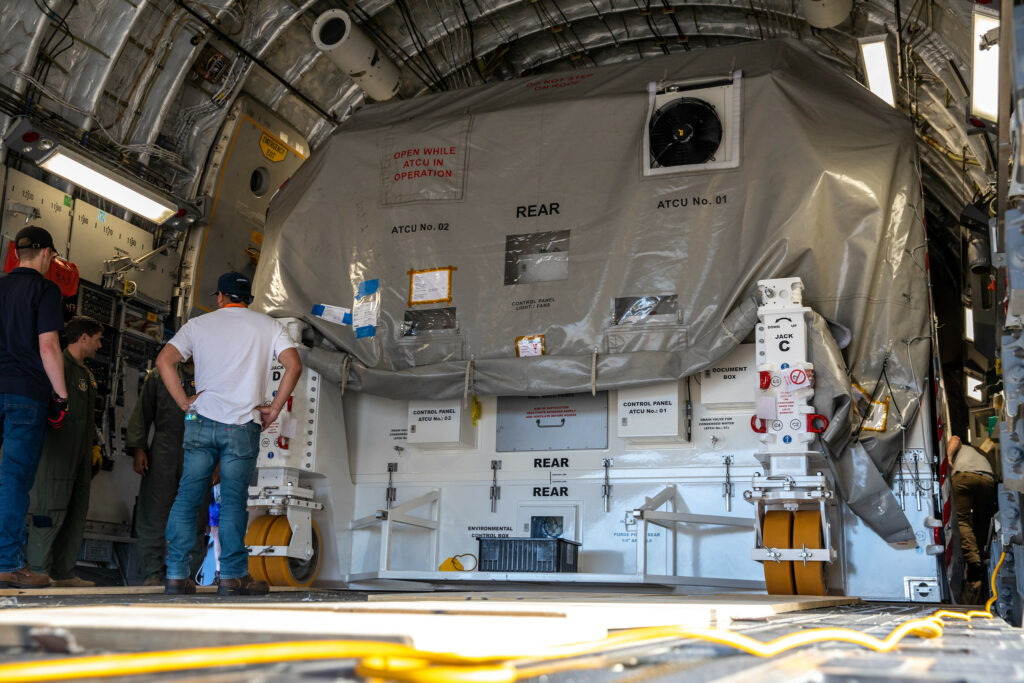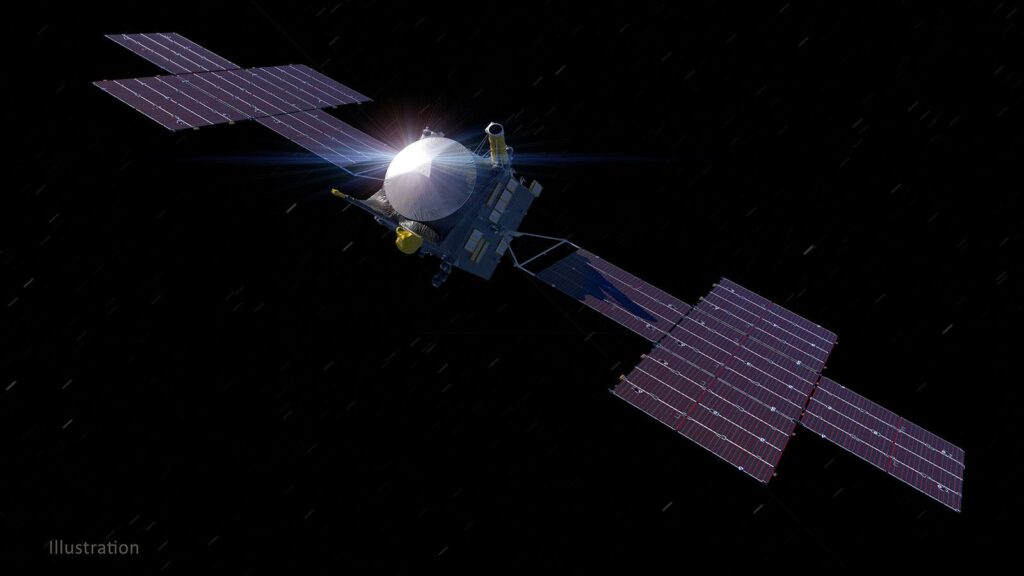The C-17 aircraft was successfully delivered to the airport of the Kennedy Space Center, inside it is the Psyche spacecraft. After unpacking, NASA specialists will begin pre-flight checks of the probe, and then begin preparing it for installation on the Falcon Heavy launch vehicle.
Targets and technical structure of the Psyche mission
The Psychе mission was approved by NASA in 2017. Its target is the asteroid Psyche (16 Psyche), characterized by a high content of metals (iron and nickel). It is believed that it may be a fragment of the core of a protoplanet that died at the dawn of the existence of the Solar System. Psyche will have to test this theory and establish the origin of the asteroid.

The probe was built by Maxar. To fulfill its scientific tasks, the apparatus received a set of four instruments, including a multispectral camera, neutron and gamma spectrometers, as well as a magnetometer. Additionally, during the flight, the probe will test experimental laser communication technology. To generate energy, the Psychе is equipped with a pair of solar panels. All the main maneuvers will be carried out using a set of electro-reactive engines on the Hall effect.
Launch and flight timeline of the Psyche mission
The ballistic window for the launch of Psyche will open on August 1, 2022. In May 2023, the spacecraft will make a gravitational maneuver in the vicinity of Mars, which will allow it to enter a permanent orbit around Psyche on January 31, 2026. The main mission of the probe is planned for 21 months of operation with the possibility of further extension.

It should be noted that together with Psyche, “fellow travelers” will go into space — a pair of Janus probes designed to study the binary asteroids (175706) 1996 FG3 and (35107) 1991 VH.
Earlier we wrote about the postponement of the launch of the Indian Chandrayan-3 mission to 2023.
According to https://blogs.nasa.gov
Follow us on Twitter to get the most interesting space news in time
https://twitter.com/ust_magazine

